Hi all,
I recently had my entire house skimmed. In the six months following this. I had a number of hairline cracks show on the walls and, according to what I understand, this is normal as the house moves so i simply filled the cracks, sanded down and proceeded to mist coat. However, these cracks have since got worse and more are showing and some are actually flexing (coming away from the wall) with large portions of the wall (lime render) coming away at some points (see image below). I called the plasterer and he said it had blown and I paid him to bond and reskim the issues. However, these are occurring everywhere now. I have spoke to a few plasterers and have said that the plasterer should have sealed this prior to skimming? Should he have checked it was lime render prior to commencing work or was that down to me? I also spoke to the lime Cornish company after testing a small sample of the render with vinegar to check it was lime and they also said he should not have used gypsum multi finish over lime render.
Some have said to remove old lime render back to the brick which I know is a lime mortar. If this is the case (which would essentially mean I have wasted days and thousands of pounds), I am thinking of have the place boarded out (dot and dab). However, I do not want any more issues. I have been reading up on how to ensure a good seal between the wall, the board adhesive and the board. Some say pva, some say sbr and some have recommended different products. I am not carrying this out myself but I certainly want to understand the correct process to avoid another situation like now. If there are any reputable plasterers in Exeter, Devon, who are interested, please give me a shout.
Disappointed is not the word. I have attached some images below (the two smaller ones are where the skim come away from the ceiling after a light sand).
I recently had my entire house skimmed. In the six months following this. I had a number of hairline cracks show on the walls and, according to what I understand, this is normal as the house moves so i simply filled the cracks, sanded down and proceeded to mist coat. However, these cracks have since got worse and more are showing and some are actually flexing (coming away from the wall) with large portions of the wall (lime render) coming away at some points (see image below). I called the plasterer and he said it had blown and I paid him to bond and reskim the issues. However, these are occurring everywhere now. I have spoke to a few plasterers and have said that the plasterer should have sealed this prior to skimming? Should he have checked it was lime render prior to commencing work or was that down to me? I also spoke to the lime Cornish company after testing a small sample of the render with vinegar to check it was lime and they also said he should not have used gypsum multi finish over lime render.
Some have said to remove old lime render back to the brick which I know is a lime mortar. If this is the case (which would essentially mean I have wasted days and thousands of pounds), I am thinking of have the place boarded out (dot and dab). However, I do not want any more issues. I have been reading up on how to ensure a good seal between the wall, the board adhesive and the board. Some say pva, some say sbr and some have recommended different products. I am not carrying this out myself but I certainly want to understand the correct process to avoid another situation like now. If there are any reputable plasterers in Exeter, Devon, who are interested, please give me a shout.
Disappointed is not the word. I have attached some images below (the two smaller ones are where the skim come away from the ceiling after a light sand).
Attachments
-
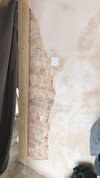 CAC07E0E-1C26-4A0E-BC10-F7E0E2AD26B6.jpeg183.7 KB · Views: 50
CAC07E0E-1C26-4A0E-BC10-F7E0E2AD26B6.jpeg183.7 KB · Views: 50 -
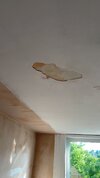 E56E0A3D-EA65-44A2-BBE5-64994CAB7936.jpeg107.8 KB · Views: 42
E56E0A3D-EA65-44A2-BBE5-64994CAB7936.jpeg107.8 KB · Views: 42 -
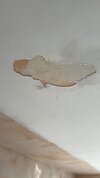 09ADD57F-C9D5-4932-A834-41EBD0FDA58E.jpeg102.2 KB · Views: 49
09ADD57F-C9D5-4932-A834-41EBD0FDA58E.jpeg102.2 KB · Views: 49 -
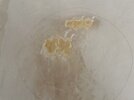 IMG_3709.jpeg216.1 KB · Views: 47
IMG_3709.jpeg216.1 KB · Views: 47 -
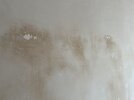 IMG_3708.jpeg159.4 KB · Views: 47
IMG_3708.jpeg159.4 KB · Views: 47 -
 7C9E05A5-0471-42E2-85CF-F5961FFADC0F.jpeg117.8 KB · Views: 47
7C9E05A5-0471-42E2-85CF-F5961FFADC0F.jpeg117.8 KB · Views: 47

